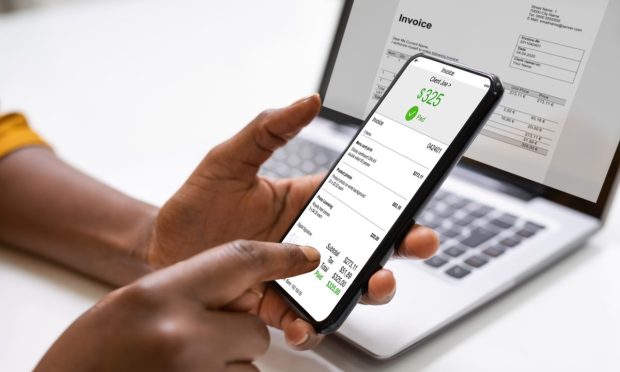4 in 10 Businesses Plan to Enable Payments Directly From Digital Invoices

As businesses make their plans to implement payments innovations, the ability to enable payment from invoice tops the list.
Forty-one percent of businesses have that innovation on their agenda, according to the “Payments Innovation Readiness Playbook,” a PYMNTS and Spreedly collaboration.
Get the report: Payments Innovation Readiness Playbook
Push payments and payments to digital wallets are not far behind, with just under 41% and 40% of businesses, respectively, intending to implement those payment innovations.
In addition, more than one in three businesses plan to implement spend management, expense controls and rules-based decisioning to automate payment methods, while more than one in four are looking at automating receivables, automating payables, receiving real-time payments, straight-through processing, enabling businesses to choose payment, sending real-time payments and application programming interfaces (APIs).
Prioritizing Payments Modernization
What’s driving this interest in payments innovations? PYMNTS research indicates that payments modernization has become a priority for many businesses because successful payments decision-makers have learned to connect the dots between optimizing their enterprise’s resources and ensuring that consumer and B2B transactions flow unfettered by ill-suited technologies or poor user experience.
The industry shift toward payments innovation became wholesale and irreversible early in the pandemic. No one could afford to compromise on payments infrastructure anymore. Every component of a payments solution had to work everywhere, on every device and with any gateway, or it was not worth the investment.
Businesses that could not find a one-size-fits-all solution easily would have to engineer it themselves. Nearly seven in 10 online merchants and platforms now want to be able to orchestrate their payment processes to manage rapid growth.
Payment orchestration is a worthwhile investment for many merchants, Spreedly CEO Justin Benson told PYMNTS. He said the idea that every business needs to think like a payments business may work for some, but for many others, they may need to focus on what they build and sell — and in that case, they don’t want or need any distractions around managing their payments infrastructure.
Read more: What Exactly Is ‘Payment Orchestration’ and Why Does Your Business Need It?
Offering a User-Friendly Payment Process
The need for innovation has been driven by consumers who want less friction at checkout — meaning minimal data input and instant transaction processing — along with effortless data security across every device.
Both consumer and B2B standards for an acceptable payments experience have risen to match the higher limits of existing technology. Most businesses now comprehend the importance of an agile payments strategy — and the pitfalls of a retrofitted one.
It is no secret that a seamless payments flow is key to business growth, but the inverse is less understood. PYMNTS research has revealed that friction on either side of transaction processing could upend any positive consumer experience, compromising customer loyalty and sabotaging client relationships.
Offering a user-friendly payment process has today become critical to engendering a positive user experience. Consumers who have become used to instant gratification through websites and mobile apps will likely demand the same streamlined payment processes offline.
Businesses with ad hoc mobile commerce and online services will need to adjust to increased competition from well-established online platforms that offer a seamless checkout experience across multiple platforms.
Successful companies will risk innovation and adopt payment orchestration to remain competitive as B2B and retail customers demand enhanced payment options and experiences.
